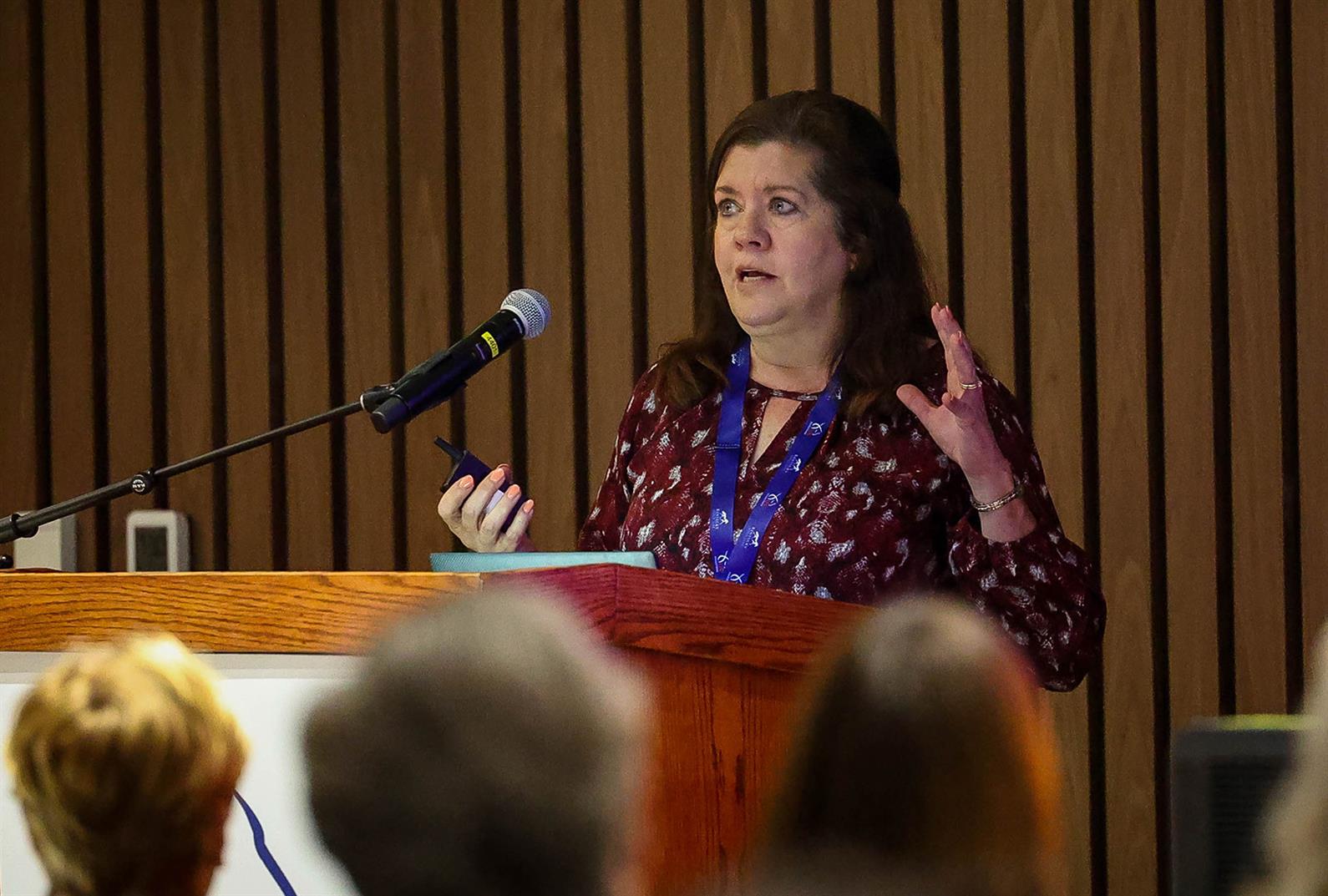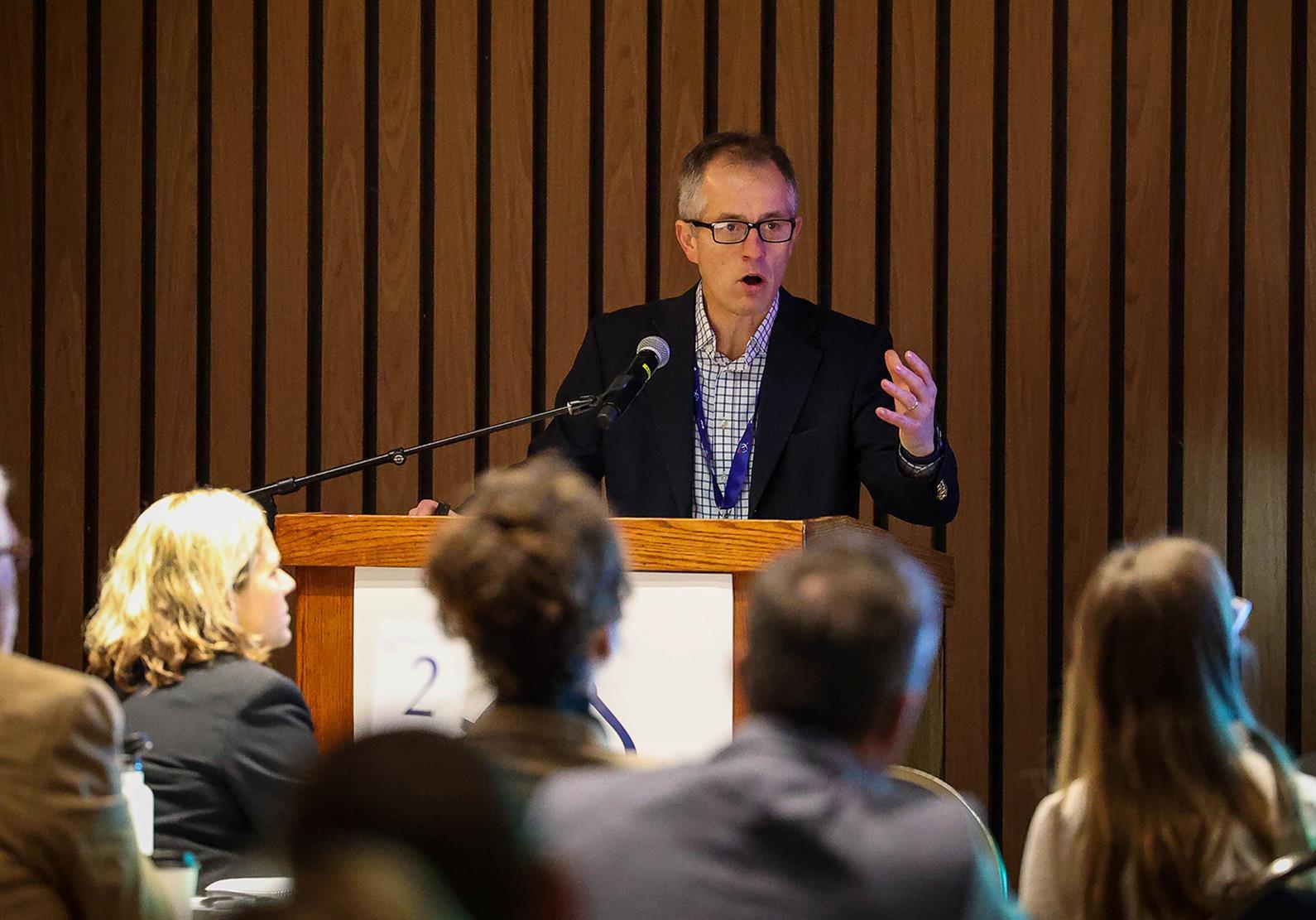USEF Chief of Sport David O’Connor, University of Kentucky Equine Science professor and member of the FEI Equine Ethics and Welfare Commission, Dr. Camie Heleski, and Chief Executive of World Horse Welfare, Roly Owers, spoke to the USEF Annual Meeting about equestrian sport and the social license to operate. Here are five takeaways from their presentation.
1. Social license to operate is an unofficial but essential piece of the puzzle.
Owers describes social license to operate as “an unwritten contract between us—the equestrian sector—and the general public to pursue our activity. It’s got nothing to do with the law. The state of a sector’s social license will define its future, whether we can continue to self-regulate or if we move to restrictions and even outright bans.”
As an example of how a social license can change, Dr. Heleski points to the recent case of Buffalo Bills player Damar Hamlin suffering a cardiac arrest on the field. It was an alarming incident that reached an audience outside football’s usual fanbase and led to heightened scrutiny of the NFL, shaking the sport’s social license to operate.
“Equestrian sport has this unique aspect in that we’re dealing with an animal, and the horse continues to be one of the most beloved animals on the planet,” said Dr. Heleski. “That makes these things extra important.”

2. The non-equestrian public doesn’t differentiate between breeds or disciplines.
“We might think that racing and dressage are light years apart. To most of the general public, it’s all horse sport,” said Dr. Heleski, adding that controversies in disciplines outside the USEF or FEI’s jurisdiction still affect the social license of those within it. “To most people, it’s all equestrians competing, and it’s under the same umbrella.”
“We are all part of the same interests. All of us have horses as part of our lives and livelihood,” said O’Connor. “Our worlds are connected, no matter the discipline or breed. A negative image problem spreads its way across social media so fast, it turns into an issue for the use of horses as a whole. To think that any discipline or sport can say, ‘That’s not our issue. We don’t play that game,’ is asking for trouble for all of us.”
3. What we do needs to stand up to scrutiny.
The ubiquity of cameras and ease of spreading photos and video has changed the way people who work with animals operate. A trainer or handler can never assume their interactions are hidden, and that’s not a bad thing.
“Can the practices in training and preparation withstand the strongest scrutiny, not just from the experts, but from the public at large? Can we train with current practices in the middle of Central Park and defend our actions? If not, those practices can’t happen,” said O’Connor. “Are we caring for the horse outside of the competitive arena in a way that meets or exceeds welfare standards? Are we fulfilling our promises after competition careers are finished for the care and fulfillment of life of these noble partners? Can we celebrate to any audience the joy, the fulfillment, the emotional connection that we have with horses while we’re playing games with them as a partner? That’s the goal.”

4. The public prioritizes emotion over evidence.
Explaining to a non-equestrian why a particular training method isn’t abusive typically won’t have an effect if it looks bad on the surface. Dr. Heleski says the use of whips in Thoroughbred racing is a prime example of this.
“Sometimes my colleagues [on the FEI Commission on Equine Ethics and Well Being] will say, ‘Okay, if we just explain that the whip doesn’t actually hurt horses, the public will be on our side.’ You’re going to have a really, really hard time convincing the public that a whip doesn’t hurt a horse.”
In other words, if it simply looks bad to members of the public, it is detrimental to the industry’s social license to operate.
5. Debates around equestrian sports will happen with or without us.
“There’s a view in equestrianism that if we talk about social license in this way, we are giving a stick to [our critics] to beat us with,” said Owers. “Now, I think there’s an element of truth in that, but we do have to put ourselves at a bit of risk, because the debate is happening anyway. And we know that for those who stick their heads in the sand, it generally ends up being far worse.
“It’s not what we talk about. It’s what we do,” he continued. “The way forward is to change our practices where we need to and truly prioritize equine welfare. If we can do this, we will absolutely take the sting out of criticisms. The critics will always be there. It’s not about doing what they are expecting us to do, but it’s being able to understand what they’re saying, and being able to justify what we do.”

